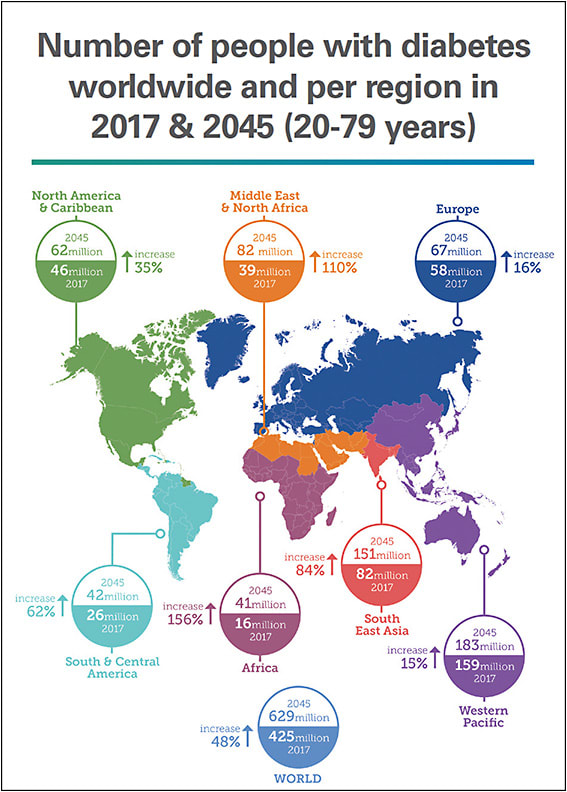The gravity of the situation bears repeating. “We’re in the middle of a diabetes epidemic,” says Nancy Holekamp, MD, director of retina services for Pepose Vision Institute in Chesterfield, MO. “It correlates to the obesity epidemic, but we’re in the middle of a diabetes epidemic.” Globally, 425 million people have diabetes, a number that is expected to grow by 48% to 629 million by 2045 (Figure 1).1 The most frequent microvascular complication of diabetes — and the most common cause of blindness in the working-age population in industrialized nations — is diabetic retinopathy (DR).2 What’s more, in the U.S., the number of people with DR is expected to nearly double to 14.6 million by 2050.3

Retina specialists, on the front lines of the surge in diabetic eye disease, need to utilize all of the tools and strategies at their disposal to prevent vision loss. A newly emerging option is the use of anti-VEGF treatment earlier in the course of diabetic eye disease to prevent development of the most severe, sight-threatening complications. Ranibizumab (Lucentis, Genentech) was recently FDA-approved for treating all forms of DR, with or without DME, and a similar approval is expected soon for aflibercept (Eylea, Regeneron). The approvals are supported by evidence from clinical trials that anti-VEGF injections regress DR, most profoundly at the moderately severe and severe nonproliferative stages (DRSS 47/53).4-8
This report summarizes the key data, explores the changing treatment paradigm, and addresses other essential aspects of patient care. ■
References
- International Diabetes Federation. IDF Diabetes Atlas, 8th ed. Brussels, Belgium: International Diabetes Federation, 2017. Available at: http://www.diabetesatlas.org ; last accessed Feb. 27, 2019.
- Nentwich MM, Ulbig MW. Diabetic retinopathy - ocular complications of diabetes mellitus. World J Diabetes. 2015;6(3):489-499.
- Projections for Diabetic Retinopathy (2010-2030-2050). National Institutes of Health. National Eye Institute website. Available at: https://nei.nih.gov/eyedata/diabetic#5 ; last accessed Feb. 27, 2019.
- Mitchell P, McAllister I, Larsen M, et al. Evaluating the impact of intravitreal aflibercept on diabetic retinopathy progression in the VIVID-DME and VISTA-DME studies. Ophthalmology Retina. 2018;2:988-996.
- Wykoff CC, Eichenbaum DA, Roth DB, Hill L, Fung AE, Haskova Z. Ranibizumab induces regression of diabetic retinopathy in most patients at high risk of progression to proliferative diabetic retinopathy. Ophthalmology Retina. 2018;2:997-1009.
- Writing Committee for the Diabetic Retinopathy Clinical Research Network. Panretinal photocoagulation vs intravitreous ranibizumab for proliferative diabetic retinopathy - a randomized clinical trial. JAMA. 2015;314(20):2137-2146.
- Gross JG, Glassman AR, Liu D, et al. Five-year outcomes of panretinal photocoagulation vs intravitreous ranibizumab for proliferative diabetic retinopathy. JAMA Ophthalmol. 2018;136(10):1138-1148.
- Regeneron press release. One-year results from positive phase 3 Eylea trial in diabetic retinopathy presented at angiogenesis symposium. Available at: https://investor.regeneron.com/news-releases/news-release-details/one-year-results-positive-phase-3-eylea-trial-diabetic ; cited Feb. 9, 2019; accessed Feb. 28, 2019.








